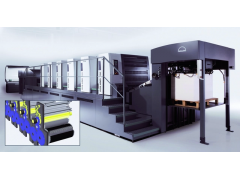The GDS gas alarm platform is a gas detection and alarm system independently developed by our company. The overall design adopts the idea of SCADA system and highly modular design: front-end network front module, data processing module, database management module, WEB service background module, each module is relatively independent, It adopts soft bus connection and has high expansion function.
The GDS system can run stably on multiple platforms such as WINDOWS and LINUX, and adopts a cross-platform C++ framework design to ensure the operating efficiency of the platform; the front-end part adopts HTML 5 design, which is convenient for interaction and is suitable for access and use under multiple platforms.
Product Features
●Adopt html5 design, WEB access ●Support load balancing, high system robustness
●Can be packaged as a client and installed locally ●Real-time SMS, sound and other alarms
●GDS system can be deployed on cloud services ●Support online settings List function
●GDS system can also be deployed locally on a single machine ●Remote control of multiple main controller functions
●Support WINDOWS, LINUX system deployment ●High concurrent network design
●Business open settings, configure system information ●Support multiple protocol access
●Real-time database Separate from the historical database ●Database cluster, long-term data storage
Gds is the abbreviation of Gas Detection System in English, which translates to gas detection system, flammable gas and toxic gas detection system.
GDS combustible gas alarm system
is a combustible gas alarm detection system.
In chemical production equipment and auxiliary facilities, there will inevitably be many sources of release of flammable gases and toxic gases. In order to prevent possible personal injury and fire and explosion accidents, and ensure the safe production of enterprises, it is necessary to install gas detection alarms in places where flammable or toxic gases may leak or gather, and upload the signals to the display alarm control unit. When there is danger on the scene, it can give early warning in time. This whole system is flammable gas and toxic gas detection and alarm system (hereinafter referred to as GDS system).
GDS Combustible Gas Alarm System Detector
As the GDS system is still in development, there is no clear specification, and the existing requirements conflict with each other. For example, "Petrochemical Combustible Gas and Toxic Gas Detection and Alarm Design Specifications" (GB50493-2009) stipulates that "combustible gas and toxic gas detection and alarm systems should be set independently". However, in the No. 116 document of the State Administration of Work Safety, "Guiding Opinions of the State Administration of Work Safety on Strengthening the Management of Chemical Safety Instrumented Systems", the GDS system was incorporated into the chemical safety instrumented system (SIS system). At the same time, combustible gas detectors are managed by the fire department and need to obtain CCCF certification.
The chaotic requirements make design units and manufacturers at a loss. Does the GDS system need to be independent? Does the GDS system need SIL certification? How should the GDS system be designed? There are currently no standards for these issues. Recently, the Ministry of Housing and Urban-Rural Development announced a new version of the "Petrochemical Combustible Gas and Toxic Gas Detection and Alarm Design Standard" (GBT 50493-2019). The standard provides a detailed explanation of the GDS system. Next, we will use the new standard provisions as a basis for GDS System design and selection are discussed.
It specifies the components of the GDS system, namely detectors, alarms and alarm control units, and does not include linkage.
The alarm control unit should adopt independently set microprocessor-based electronic products, and have the following basic functions
1. Can supply power for combustible gas detectors, toxic gas detectors and their accessories:
2. Can receive the output signal of gas detectors , display the gas concentration and send out sound and light alarms 3 can manually cancel the sound and light alarm signals, and can still send out alarms when the alarm signal is input again
4. It has a relatively independent and independent alarm function, and can distinguish and identify the location number of the alarm.
5. Under the following circumstances, the alarm control unit should be able to send out sound and light that are clearly different from the alarm signals of combustible gas and toxic gas concentration Fault alarm signal:
1) Open circuit or short circuit between the alarm control unit and the detector;
2) Undervoltage of the main power supply of the alarm control unit
3) Open circuit or short circuit between the alarm control unit and the power supply.
6. It has the following recording, storage and display functions:
1) It can record the alarm time of flammable gas and toxic gas, and the daily timing error should not exceed 30s;
2) It can display the total number of current alarm locations
; 3) It can distinguish the alarm location first, Subsequent alarm points are continuously displayed in the order of alarm time; 4) It has the function of historical event recording.
- 卖家服务
- For Buyers
- Help
-
Mobile

H5 Mobile
Faster mobile access

WeChat official account
Mobile phone sign in to win points

WeChat applet
Play with new mobile marketing
- English




